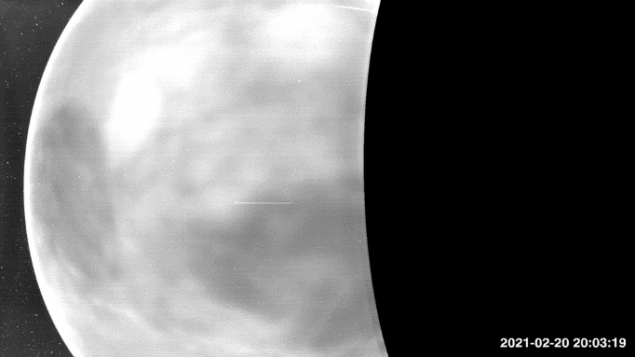
New images from NASA’s Parker Solar Probe offer a rare glimpse of the surface of Venus as the human eye might see it. Recorded as the probe flew past the fiery, cloud-shrouded planet on its mission to the Sun, the visible-light images of Venus’ plains and plateaus are the first to be taken from space, and the first to emerge from the Venusian surface since the early 1980s, when the last in a pioneering series of Soviet probes succumbed to the harsh environment within an hour of landing. By analysing the images, mission scientists hope to better understand how Venus formed, and why conditions on its surface are so different from those that prevail on the Earth and Mars.
Although the Parker Solar Probe was designed to study the solar wind, a series of scheduled Venus “flybys” – manoeuvres that use gravity to adjust a spacecraft’s trajectory without recourse to scarce onboard fuel – gave mission scientists a chance to do some bonus planetary exploration. During a flyby on 11 July 2020, a team led by Brian Wood of the US Naval Research Laboratory used the probe’s Wide-Field Imager (WISPR) to image Venus’ “nightside”. Because Venus takes 243 Earth days to complete a single rotation, weather conditions on its nightside are markedly different from those on the side receiving sunlight. Wood and his colleagues hoped they might be able to measure the speed of clouds in Venus’ thick atmosphere.
Instead of seeing clouds, though, WISPR unexpectedly saw through them, picking up the faint glow emanating from the planet’s surface. “The surface of Venus, even on the nightside, is about 860 degrees [Celsius],” Wood explains. “It’s so hot that the rocky surface of Venus is visibly glowing, like a piece of iron pulled from a forge.”
Observing at optical wavelengths
While some of the wavelengths WISPR recorded lie in the near-infrared region of the spectrum, and are thus invisible to humans, the instrument also picked up light at blue, green and red wavelengths ranging from 470 to 750 nm. During a later flyby on 20 February 2021, a more favourable alignment between spacecraft and planet enabled the team to image the entire nightside.

NASA selects two Venus missions for launch
The resulting images reveal various surface features, including a plateau called Tellus Regio and a plain known as Aino Planitia. Because higher-altitude regions are cooler than lower areas, they show up as dark patches amidst the brighter plains. The WISPR team also recorded a luminous halo of oxygen surrounding the planet, which members describe as “somewhat analogous to auroral emissions observed at Earth”.
The Parker Solar Probe is scheduled to perform two additional Venus flybys before its mission ends in 2025. The last of these, in November 2024, will give the probe’s scientists a third and final shot at imaging Venus’ darkside. Looking further ahead, the ESA/NASA Solar Orbiter mission also plans to gather data on Venus during a series of flybys stretching into the 2030s.
A detailed analysis of the new images appears in Geophysical Research Letters.



